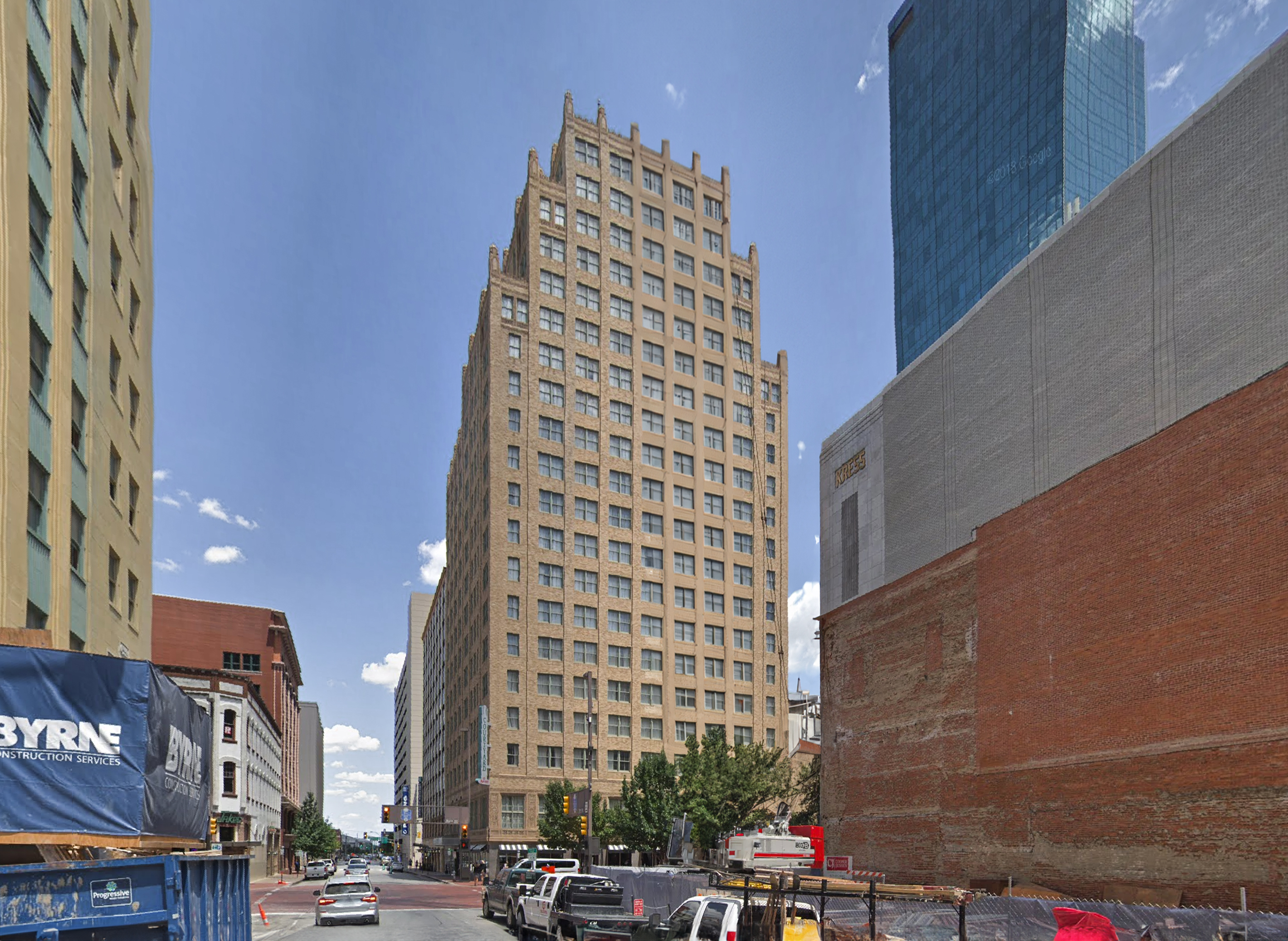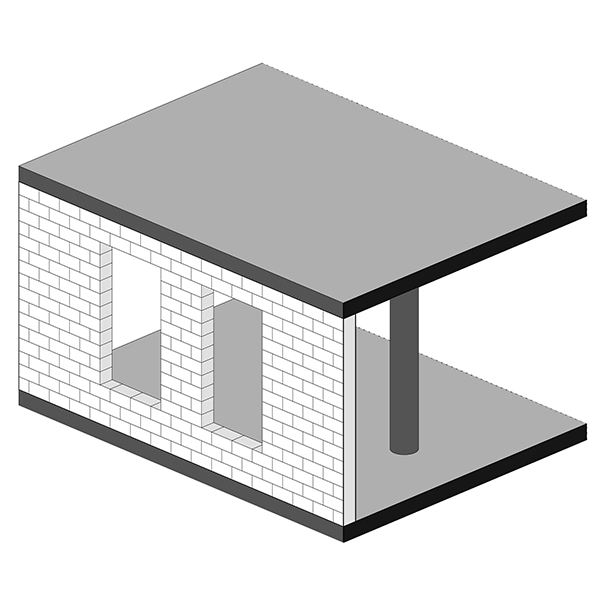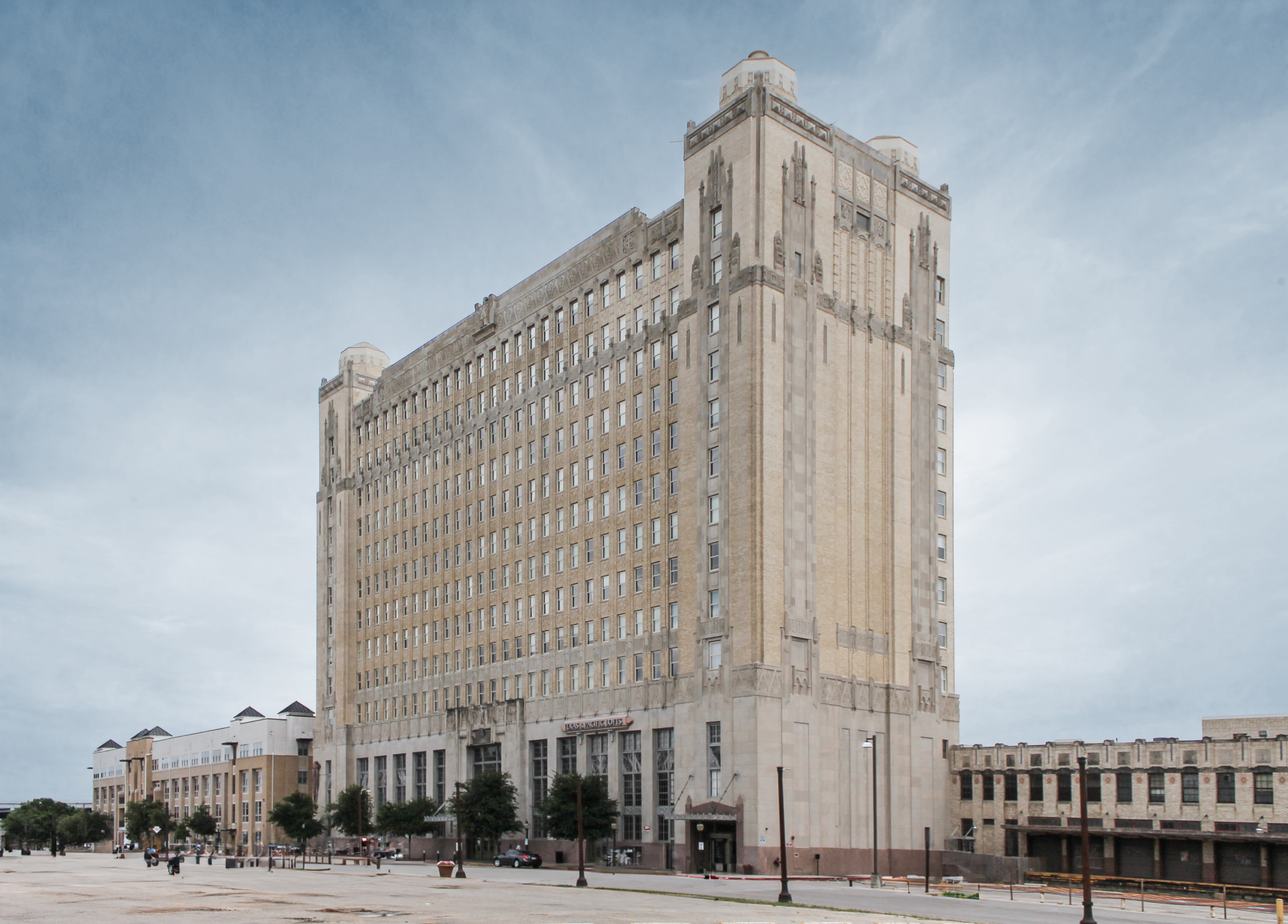The Blackstone Hotel is an Art-deco skyscraper designed by Mauran, Russell & Crowell, and built in 1929 in Fort Worth, TX.
Blackstone Hotel is not the only name you might know this building by though. It is common for companies to want to attach their names to iconic buildings when they move in, or for the general public to come up with nicknames, and this one is no exception. The building has changed names several times over the years, and is also known as:
- Blackstone Hotel between 1929 and 1952.
- Hilton Hotel between 1952 and 1962.
- Blackstone Hotel (again) between 1962 and 1982.
- Courtyard by Marriott Foth Worth from 1999 until this day.
Its precise street address is 601 Main Street, Fort Worth, TX. You can also find it on the map here.
The Blackstone Hotel is a structure of significant importance both for the city of Fort Worth and the United States as a nation. The building embodies the distinctive characteristic features of the time in which it was built and the Art Deco style. Because of that, the Blackstone Hotel was officially included in the National Register of Historic Places on February 2nd 1984, and was also included in the Fort Worth Register of Historic Places in 1998.
The building underwent a major restoration in 1952.



